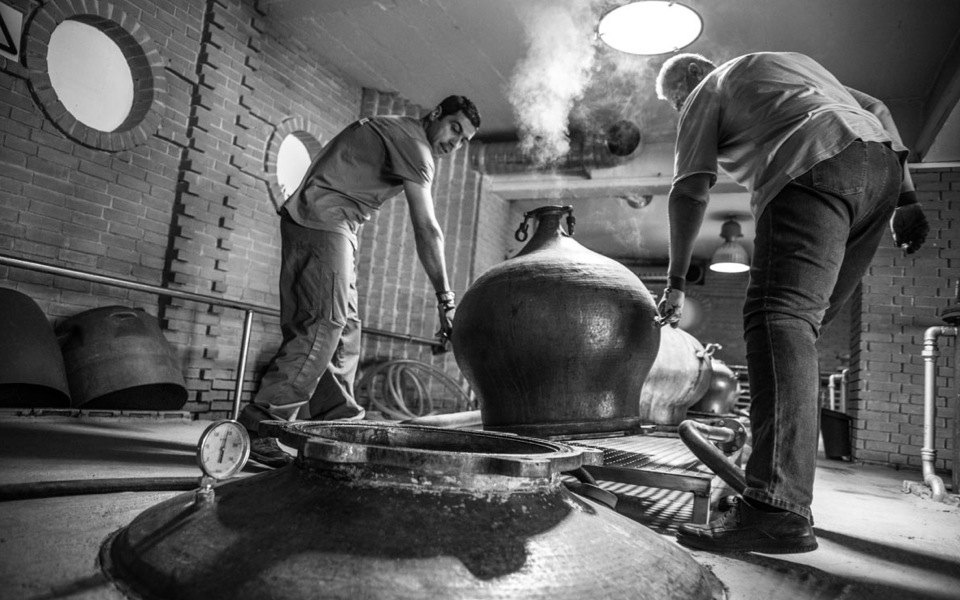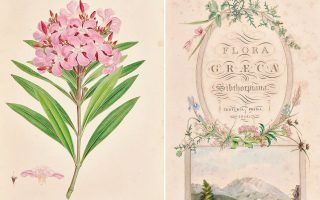Exhibition illustrates how ouzo is an integral part of Lesvos’s culture

If you get sloppy drunk on ouzo, then you simply don’t know how to drink, say experts on the Greek spirit from the eastern Aegean island of Lesvos, where it has been produced since at least the second half of the 19th century.
This aspect of the drink and all sorts of other fascinating scenes related to ouzo are the subject of a photography exhibition by Olga Saliampoukou and the Lesvos Association of Distillers in the garden behind the old town hall of the island’s capital, Mytilene, running through August 12.
Evthymios Papataxiarchis, a professor of social anthropology and history at the University of the Aegean in Mytilene, studied the culture of ouzo drinking at a local village and ascertained that inebriation is a rarity in the small community, which equates drunkenness with a disease. The important thing to the local, he found, is not how much you drink, but how you drink.
Ouzo, Papataxiarchis notes, is, after all, a part of the culture of the traditional Greek kafeneio – so much more than just a cafe; an all-day hangout and meeting point where alcohol is inevitably served with a few mezedes on the side.
Saliampoukou could not agree more with the professor’s observation.
“If you don’t accompany ouzo with a meze, you can’t fully appreciate its flavor,” she says. “No one can talk about ouzo without having felt its intensity. And I’m not talking about getting drunk on it, but the intense flavor experiences it brings.”
For the Lesvos photographer, ouzo instantly awakens memories of her grandmother rubbing her down with the potent spirit to stave off a fever or ease a stomach ache, or afternoons at the kafeneio and the smell of her village, Kerasia.
Lesvos has 16 distilleries – though few know about them off the island – and over 30 ouzo labels. Matis, established in 1861, is the oldest distillery. The others are EPOM, Veto, EBA, Barbayanni, Isidoros Arvanitis, Smyrnio, Matarelli, Aigaio, Giannatsis, Samaras, Kefi, Kronos, Psaropoula, Petra and Pitsiladi.
Saliampoukou visited the distillers and has recorded the production process. Her work also illustrates the differences in the production units, which range from the very small to the ultramodern but are all connected by the fact that they are family businesses.
“A plethora of herbs boil for hours in a bronze cauldron and then the ouzo is enjoyed for even more hours at various seaside paradises,” says the photographer.
“Lesvos,” she says, “may be surrounded by sea but it brims with ouzo and olive oil. Ouzo here is not just a spirit; it’s an intrinsic part of our culture, of this wind-swept land that has soaked up the aroma of anise.”





